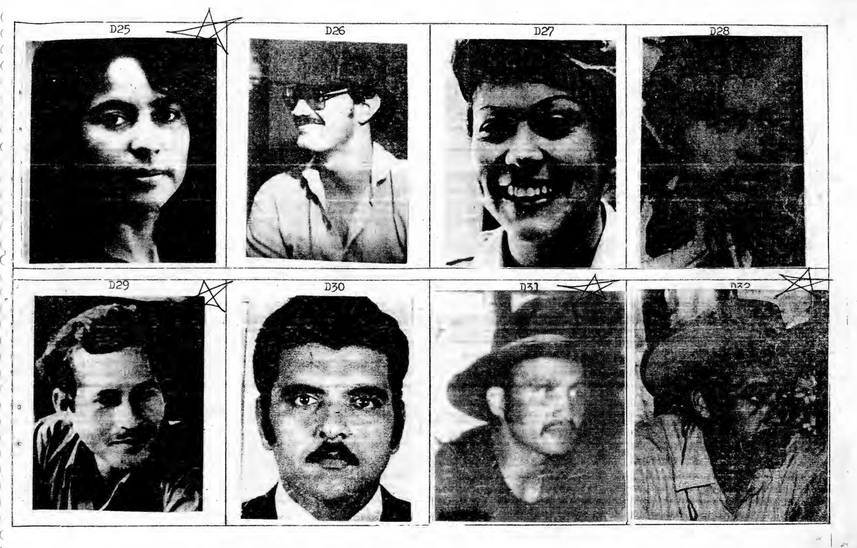
By Caroline Kuritzkes

Unearthing the sheer number of human rights abuses launched by Latin American dictatorships during the Cold War is a close to impossible task. Murders, disappearances, and physical and psychological torture cases number in the tens of thousands – data points seemingly lost in a historical constellation. Shockingly enough, these egregious cases of violence were propagated through the aid of mass US funding and CIA training. Indeed, between the 1960’s and late 1980’s, the US government sent millions of dollars of military aid to Latin American dictatorships and deployed thousands of operatives to instruct Latin American soldiers to kill, maim, and torture leftist rebels in institutions such as the School of the Americas training institute. Consumed by the fear of communism’s spread, the United States perpetuated these abuses to quell leftist movements across Latin America, undeterred by the human cost. Though the Cold War is long over, hundreds of documents pertaining to US-directed brutality remain hidden in a historical black hole.
How can historians keep pace with the classified (and often silenced) material withheld from public view? Will the information contained within CIA documents ever reach American national consciousness? Will the American public ever know or care about the incriminating nature of US Cold War intervention in Latin America? And will the US government ever admit some level of culpability?
There is one recent declassification effort in El Salvador, however, that can help shed light on the answers to some of these questions. On September 28, 2014, a 1987 document known as “The Yellow Book,” from El Salvador’s military intelligence archive, was made public. Detailing the photos and identification of almost 2,000 Salvadoran citizens marked as “delinquent terrorists,” the Yellow Book was none other than a compilation of targets for death squads and military units associated with José Napoleón Duarte’s dictatorship during the Salvadoran Civil War (1979-1992). Check it out here.

According to the National Security Archive, a research institute that collaborated with the Human Rights Data Analysis Group and the University of Washington Center for Human Rights to publish the book online:
“It consists of a systematic list with 1,915 entries on targeted individuals, 1,857 identified by name, along with corresponding photographs, and notes on their alleged connections to suspect organizations including unions, political parties, and rebel groups of the Farabundo Marti National Liberation Front (FMLN). A hand-written note on its cover page indicates the report was intended to aid security forces in identifying the opposition. “Use it,” the note says, “Make copies of the photographs and put them on your bulletin board so you will know your enemies.”
Many of the book’s target individuals were victims of murder, extrajudicial execution, forced disappearances, detention, arrest, torture, and interrogation. Yet what struck me most was the book’s meticulous bureaucratic detail in identifying each leftist “insurgent.” The archive even goes so far as to record the group associated with each target, among thousands, and his or her role in various rebel organizations. Comandante militar (military commander), cocinera (cook), combatiente (combatant), miembro (member), and político (politician) are only a fraction of the labels that the Salvadoran Armed Forces may have found useful.

This tremendous compilation of data must have entailed significant intelligence effort, funding, and time to obtain and assemble. The National Security Archive estimates that intelligence collection must have taken place over a period of years, beginning in the 1970’s. Did the Salvadoran military-led government achieve it alone? Though no existing evidence confirms direct US involvement in the production of the book itself, given the US’s interventionist track record, it would not be difficult to imagine the contrary. Such rigor clearly parallels the intricate and comprehensive detail of the CIA’s own records, including a declassified 1983 training manual detailing the most effective methods of interrogating political prisoners. The United States provided the Salvadoran military with $5.7 million in economic aid in the year 1980, and by 1992, the aggregate sum of US security funding amounted to $5 billion. Lending of this kind — towards the propping up of Latin American military dictatorship – was absolutely consistent with the US government’s public and classified efforts to thwart the perceived communist threat at all costs.
Current human rights watch organizations, as well as a 1992 UN Truth Commission created in the wake of the Salvadoran Civil War, demand that El Salvador reconcile its own military history of torture, murder, and violence. But even with the declassification and release of the Yellow Book, US accountability lies very much out of the limelight. Ultimately, the document’s meticulous and exhaustive data compilation may suggest that the Yellow Book was shaded with red, white, and blue.
Caroline Kuritzkes ’18 is in Ezra Stiles College. Contact her at caroline.kuritzkes@yale.edu